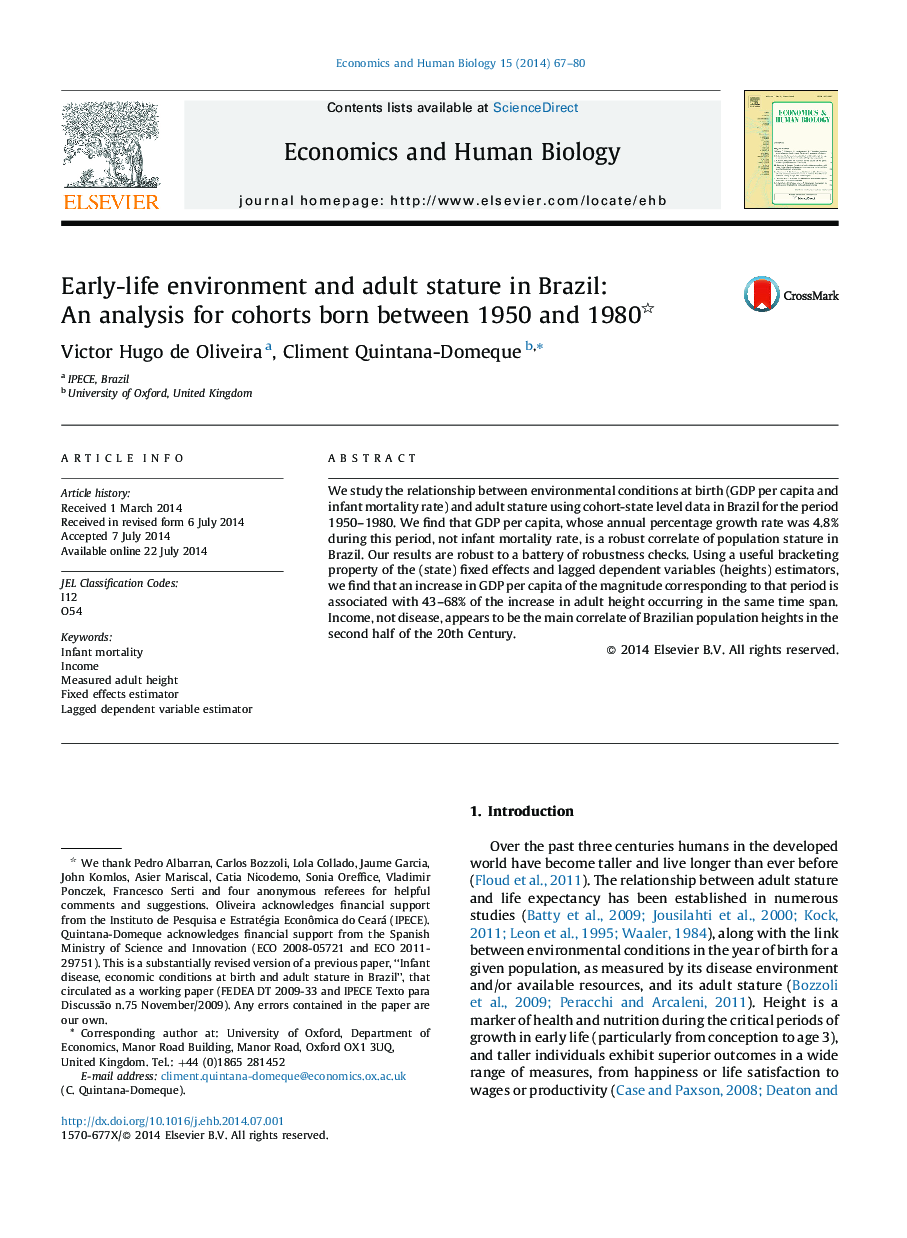| Article ID | Journal | Published Year | Pages | File Type |
|---|---|---|---|---|
| 5056991 | Economics & Human Biology | 2014 | 14 Pages |
â¢We study the relationship between disease and income environments in the year of birth and adult stature in Brazil.â¢GDP per capita in the year of birth, not infant mortality rate, is a robust correlate of population stature in Brazil during the period 1950-1980.â¢An increase in GDP per capita of the magnitude corresponding to that period is associated with 1.2-1.9 cm increase in adult height occurring in the same time span.
We study the relationship between environmental conditions at birth (GDP per capita and infant mortality rate) and adult stature using cohort-state level data in Brazil for the period 1950-1980. We find that GDP per capita, whose annual percentage growth rate was 4.8% during this period, not infant mortality rate, is a robust correlate of population stature in Brazil. Our results are robust to a battery of robustness checks. Using a useful bracketing property of the (state) fixed effects and lagged dependent variables (heights) estimators, we find that an increase in GDP per capita of the magnitude corresponding to that period is associated with 43-68% of the increase in adult height occurring in the same time span. Income, not disease, appears to be the main correlate of Brazilian population heights in the second half of the 20th Century.
